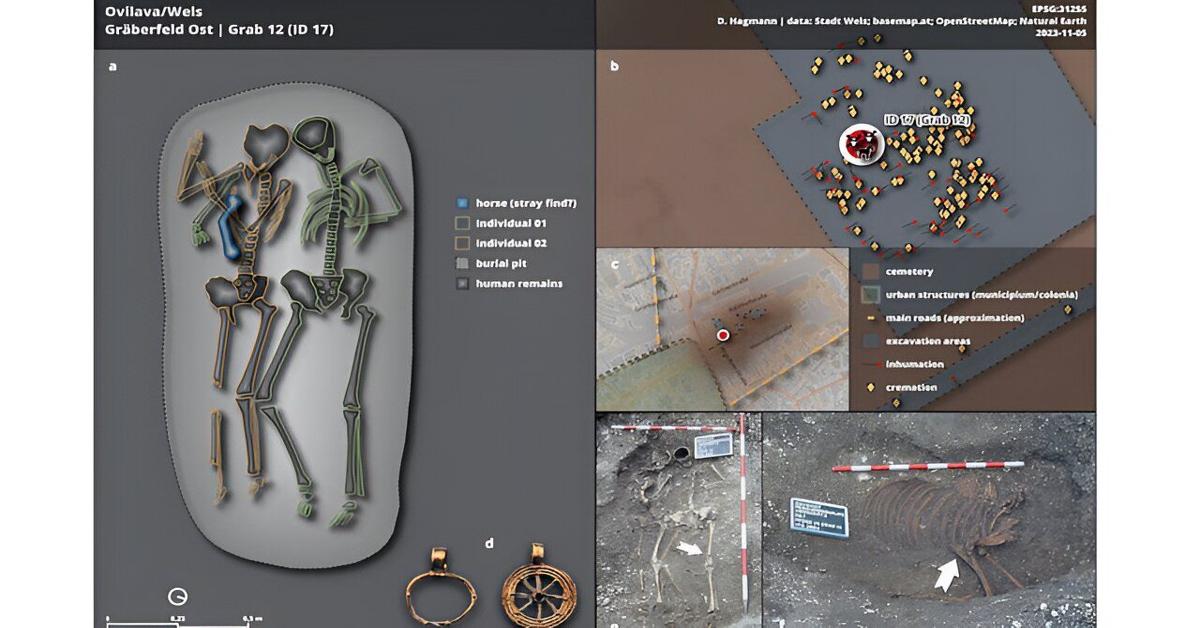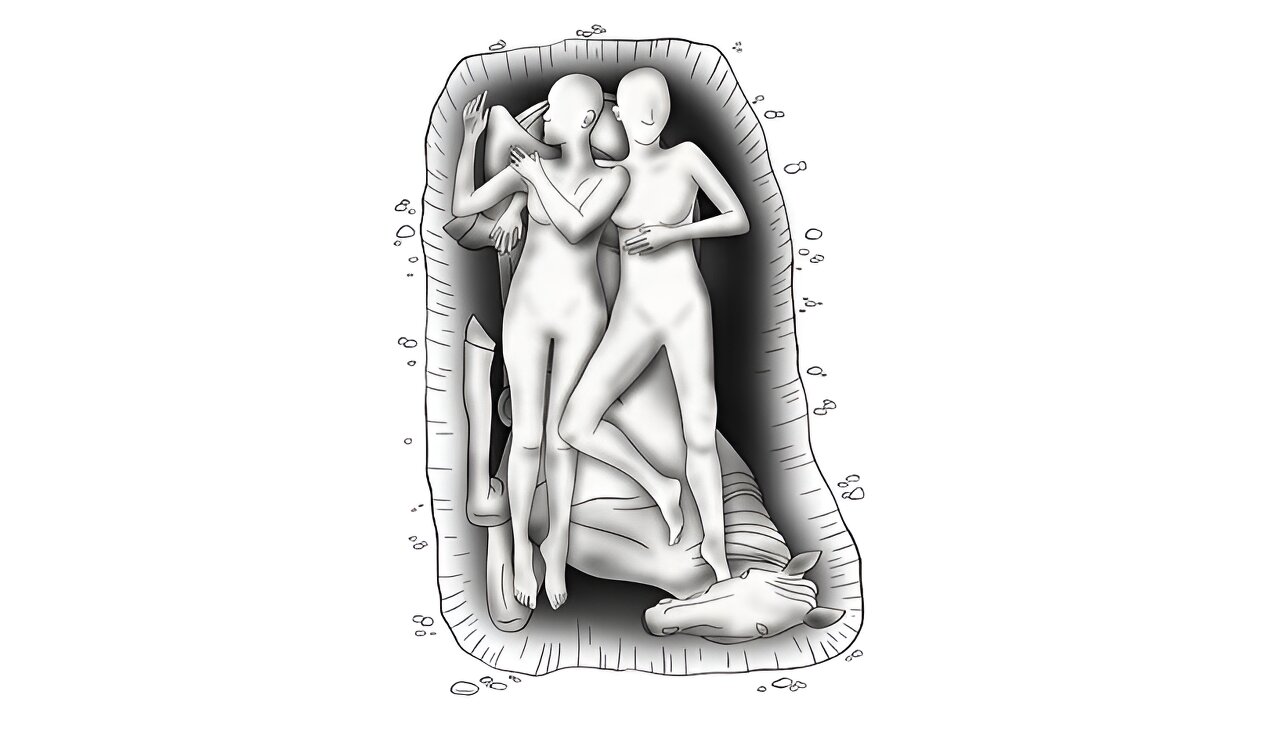
An excavation in Wels, Austria, initially believed to be an early medieval double burial of a married couple and a horse, has unveiled surprising revelations through modern archaeological techniques. The grave, unearthed 20 years ago, turned out to be a Roman-era burial site, shedding new light on ancient burial practices and historical connections in the region.
What makes this discovery truly exceptional is the identification, through genetic analysis, of a biological mother and her daughter buried together. This marks the first such finding from Roman times in Austria. Osteological studies and ancient DNA analysis not only confirmed the biological relationship but also suggested a familial connection between the two individuals.
Led by anthropologist Sylvia Kirchengast and archaeologist Dominik Hagmann from the University of Vienna, the investigation unveiled remarkable details. Radiocarbon dating revealed the grave's true age, placing it in the second to third century A.D., firmly within Roman antiquity in Austria.

The burial included golden grave goods and the remains of a horse, adding layers of complexity to the narrative. Archaeozoological studies of the horse and the detailed examination of the grave goods enriched our understanding of the burial context.
While the exact circumstances of the double burial remain unclear, the scientists theorize that both individuals may have succumbed to an illness simultaneously. Tradition from the late Iron Age suggests they were buried alongside their horse. The skeletal features of the older individual hint at a life of frequent riding, adding depth to the interpretation.
This discovery underscores the immense potential of modern scientific methods in archaeology, especially when combined with traditional research approaches. It offers a glimpse into ancient burial practices and family dynamics, enriching our understanding of Roman Austria's history and culture.
Source: Newsroom